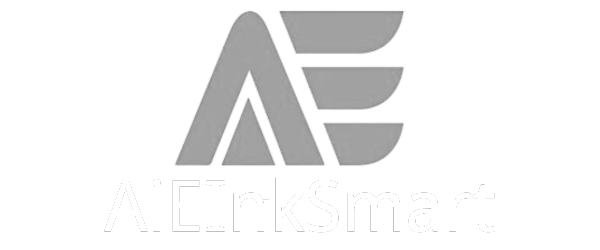
You may notice a new look to price tags during your next visit, as Sainsbury’s testing electronic shelf-edge labels in three stores brings a significant shift for Esl Retail. With Electronic Shelf Labels powered by ESL Gateway AP, you see prices updated instantly on each ESL Price Tag. This digital approach from Sainsbury’s not only changes the visual experience but also introduces a new standard for accuracy and efficiency.
Sainsbury’s Testing Electronic Shelf-Edge Labels: Will Paper Price Tags Disappear?

The Likelihood of a Permanent Switch
You may wonder if Sainsbury’s testing of digital price tags signals the end of traditional paper price tags in supermarkets. Sainsbury’s is currently trialling electronic shelf-edge labels as part of its broader technology initiatives. The company aims to see how these digital displays can improve both customer experience and operational efficiency.
- Sainsbury’s testing focuses on how well electronic shelf labels perform in real-world conditions.
- The trials measure the impact on store operations and shopper satisfaction.
- The company evaluates whether this technology can streamline pricing updates and reduce manual labor.
Industry experts predict that electronic shelf labels could become a common sight on UK high streets by 2025. This timeline suggests that Sainsbury’s may soon decide whether to make this switch permanent. If the trials prove successful, you could see digital price tags replace paper ones across many Sainsbury’s locations.
Note: Sainsbury’s is not alone in exploring this technology. Many supermarkets are looking for ways to modernize their stores and improve efficiency.
What This Means for Shoppers
As a shopper, you will notice several changes if Sainsbury’s adopts electronic shelf-edge labels permanently. The most immediate difference comes from the way prices appear on shelves. Digital price tags allow for real-time updates, so you always see the most accurate pricing information. Sainsbury’s testing in select stores, such as the Witney location, already demonstrates how dynamic pricing can work in practice.
You benefit from:
- Up-to-date prices that reflect current promotions or discounts.
- Rich product information and images displayed on digital screens.
- A more interactive and engaging shopping experience.
Sainsbury’s also explores other in-store technologies, such as interactive kiosks and augmented reality, to make your visits more enjoyable. These innovations aim to transform shopping from a routine task into a more engaging activity.
However, feedback from shoppers during the trials has been mixed. Some of you appreciate the improved efficiency and instant price changes. Others express concerns about the reliability and practicality of electronic shelf-edge labels, especially when it comes to dynamic pricing. One shopper mentioned that the technology could offer significant efficiencies for store operations, while another described it as a “nightmare” and questioned its value.
You may find that digital price tags make it easier to compare products and spot deals. At the same time, you might need time to adjust to the new look and feel of supermarket shelves. As Sainsbury’s continues to test and refine this technology, your feedback will play a crucial role in shaping the future of in-store shopping.
What Are Electronic Shelf-Edge Labels and How Do They Work?

Real-Time Price Updates and Efficiency
You encounter electronic shelf-edge labels as digital displays that replace traditional paper tags. These labels connect to a centralized pricing system, allowing you to see real-time price updates every time you shop. The technology behind electronic shelf labels uses e-paper or LCD screens, which offer clear visibility and energy efficiency. You notice instant changes in prices, especially during promotions or sales, because the system updates all shelves at once.
- Electronic shelf labels automate the pricing process, reducing manual errors.
- You see accurate prices that reflect current offers and discounts.
- The labels integrate with existing retail infrastructure, making stores more efficient.
The wireless communication methods, such as Wi-Fi or proprietary radio frequency, enable seamless updates. Retailers like Sainsbury’s testing this technology can adjust prices remotely, saving time and labor. You benefit from dynamic promotions and improved compliance with pricing regulations. The integration with inventory systems also helps display stock levels and alerts for low-stock items, enhancing your shopping experience.
| Feature | Description |
|---|---|
| Communication Method | ESLs use wireless technology to connect with a central hub for dynamic pricing automation. |
| Centralized Pricing System | Retailers can update prices instantly across all shelves, reducing manual errors and saving time. |
How Sainsbury’s Uses Electronic Shelf-Edge Labels
Sainsbury’s trialling electronic shelf-edge labels in select stores demonstrates a commitment to making stores more efficient. You see these labels in locations such as Witney, where the technology enhances pricing efficiency and reduces waste. Sainsbury’s uses shelf fixings by HL Display in Oxfordshire to test new formats and technology. The company enables remote price updates via computer, allowing for dynamic pricing and real-time adjustments.
| Location | Technology Used | Purpose |
|---|---|---|
| Witney | Electronic shelf-edge labels (ESLs) | Enhance pricing efficiency and reduce waste |
| Oxfordshire | Shelf fixings by HL Display | Test new formats and technology |
| Various | Remote price updates via computer | Enable dynamic pricing |
You experience the benefits of Sainsbury’s testing as the trials continue. The technology supports instant updates and accurate pricing, making your shopping trips smoother and more reliable.
Benefits of Electronic Shelf-Edge Labels for Shoppers and the Environment
Improved Pricing Accuracy
You experience a new level of accuracy when you shop in stores using electronic shelf-edge labels. This technology synchronizes prices with product databases, ensuring that you always see the correct price on the shelf. Real-time updates allow you to benefit from instant changes during promotions or sales, eliminating confusion and dissatisfaction. Digital price tags also support dynamic pricing, so you see the latest offers without delay.
Consider how electronic shelf-edge labels compare to traditional paper price tags:
| Feature | Electronic Shelf Labels (ESLs) | Paper Price Tags |
|---|---|---|
| Real-time updates | Yes | No |
| Human error reduction | High | Low |
| Consistency across channels | Yes | No |
| Dynamic pricing capabilities | Yes | No |
| Labor cost efficiency | High | Low |
You notice that prices remain consistent across online and offline channels, creating a unified shopping experience. Sainsbury’s testing this technology means you benefit from fewer pricing errors and improved transparency. Store staff can focus more on customer service, as electronic shelf-edge labels automate repetitive tasks and reduce manual interventions.
Tip: You can rely on the accuracy of digital price tags, which helps you make informed decisions and spot deals quickly.
Reduced Paper Waste and Environmental Impact
You help avoid paper waste every time you shop at stores using electronic shelf-edge labels. Major retailers, including Sainsbury’s, have adopted this technology to support sustainability goals. By eliminating traditional paper price tags, supermarkets achieve significant environmental benefits. For example, EU retailers reported over a 25% decrease in paper consumption, and IKEA achieved a 30% reduction in paper waste after switching to electronic shelf labels.
- ESLs automate price updates, minimizing manual tasks for staff.
- You support better inventory management and transparency.
- Retailers can achieve a 22% reduction in carbon emissions by using electronic shelf-edge labels.
This shift aligns with broader sustainability efforts in the retail industry. The technology helps lower the carbon footprint and supports compliance with tightening environmental regulations. Sainsbury’s testing electronic shelf-edge labels demonstrates a commitment to environmental and operational benefits. You play a role in supporting sustainable practices every time you choose stores that use digital price tags.
| Evidence Type | Impact Description |
|---|---|
| Reduction in Paper Consumption | Over 25% decrease in paper use for EU retailers |
| Reduction in Carbon Emissions | 22% reduction in carbon emissions for supermarkets |
| IKEA’s Paper Waste Reduction | 30% less paper waste after ESL implementation |
Note: The benefits of the technology extend beyond the store, helping you contribute to a greener future.
Drawbacks and Concerns with Sainsbury’s Electronic Shelf-Edge Labels
Visibility and Ease of Use
You may find that electronic shelf-edge labels do not always match the clarity of traditional paper tags. Some shoppers prefer the familiarity of printed tags, which have been a staple in supermarkets for decades. When you look at the digital screens, you might notice that smaller ESL displays can be harder to read, especially if you are a senior or have visual impairments. This can make it challenging to quickly check prices or product details as you move through the aisles.
You also face potential cybersecurity risks with this technology. These include:
- Vulnerabilities to wireless attacks, which can allow unauthorized access and manipulation of the labels.
- The possibility of false information being displayed, which can cause confusion and financial loss.
- Risks from QR codes on ESLs, which could lead to phishing attacks and compromise your personal information.
These concerns highlight the need for robust security measures and accessible design as Sainsbury’s continues to expand its use of digital price tags.
Dynamic Pricing and Shopper Reactions
You might notice that electronic shelf-edge labels enable dynamic pricing, which can change the way you experience shopping. This technology allows stores to adjust prices quickly based on demand, time of day, or even the weather. While this can help retailers respond to market trends, it also raises concerns for you as a shopper.
“These digital price tags may enable Kroger and other grocery chains to transition to ‘dynamic pricing,’ in which the price of basic household goods could surge based on the time of day, the weather, or other transitory events – allowing stores to calibrate price increases to extract maximum profits at a time when the amount of Americans’ income spent on food is at a 30-year high.”
“The main concern with the ESLs and their dynamic pricing is the potential for what’s called ‘surge pricing,’ where merchandise becomes more expensive during times of high demand to make a quick profit.”
“Shoppers would effectively have no choice but to pay more and could be completely unaware the cost had changed.”
You may feel uneasy about the lack of transparency and control over pricing. The impact of these rapid changes can affect your trust in the supermarket and your ability to budget for essentials. Sainsbury’s must consider these reactions as it evaluates the broader adoption of electronic shelf-edge labels.
Sainsbury’s and Industry Trends in Electronic Shelf-Edge Labels
How Other Retailers Are Adopting Digital Price Tags
You see a growing number of supermarkets worldwide moving toward digital price tags. This shift helps retailers update prices quickly and reduce errors. Many leading chains have reported significant improvements in efficiency and labor savings after adopting this technology. For example, Walmart in Texas reduced the time needed for price changes from about two days to just minutes. Kroger cut repricing time from two weeks to five minutes, achieving up to 90% labor cost reduction. Maurer’s Market now updates prices in under ten minutes, saving around 80% of labor time and reducing mistakes. Large supermarket chains have reported annual labor cost savings of $200,000 and up to 40% fewer pricing errors.
| Retailer / Example | Labor Savings / Efficiency Gains |
|---|---|
| Walmart (Texas store) | Price changes reduced from ~2 days to minutes |
| Kroger | Repricing time cut from 2 weeks to 5 minutes; up to 90% labor saved |
| Maurer’s Market | Price update time cut from 4 days to under 10 minutes; ~80% labor saved |
| Large Supermarket Chains | $200,000 annual labor savings; up to 40% reduction in pricing errors |
International supermarkets have also learned valuable lessons from their digital transitions. You can see how integrating dynamic pricing with AI, using NFC or QR codes for personalized offers, and displaying product origins for transparency all enhance the shopping experience. These strategies help retailers optimize margins, reduce waste, and build trust with customers.
What Sets Sainsbury’s Testing Apart
You notice that Sainsbury’s takes a forward-thinking approach with its electronic shelf-edge label system. This technology allows for rapid price updates, which means you always see the most current information. Sainsbury’s labels also provide extra product details, giving you more insight as you shop. The company includes these digital labels as part of its broader “future role of store” concepts, showing a commitment to innovation and customer engagement.
- Quick price updates keep information accurate.
- Additional product details support informed choices.
- The system aligns with Sainsbury’s vision for the future of retail.
You benefit from these unique features, which set Sainsbury’s apart from other supermarkets. The company’s focus on both efficiency and customer experience positions it as a leader in retail technology.
You see sainsbury’s move to electronic shelf-edge labels as a sign of change in supermarkets. This technology brings real-time price updates and supports dynamic pricing models.
- You benefit from consistent pricing between online and in-store offers.
- Retailers can adjust prices quickly, sometimes several times a minute.
- Both large and small chains gain flexibility and labor savings.
You may soon expect digital price tags to become the standard as more supermarkets adopt this approach.
FAQ
What are electronic shelf-edge labels?
Electronic shelf-edge labels display product prices digitally. You see these labels on store shelves instead of paper tags. The system updates prices instantly, which helps you find accurate information every time you shop.
How do electronic shelf-edge labels benefit you?
You experience faster price updates and fewer errors. The labels show current promotions and product details. You also help reduce paper waste, which supports sustainability efforts in your local store.
Can you trust the prices shown on electronic shelf-edge labels?
You can rely on the accuracy of digital price tags. The system connects to a central database, which ensures that prices match current offers and discounts. You see the same price online and in-store.
Will electronic shelf-edge labels affect your shopping experience?
You may notice a new look on shelves. The labels make it easier to compare products and spot deals. You might need time to adjust, but you benefit from improved efficiency and better information.


